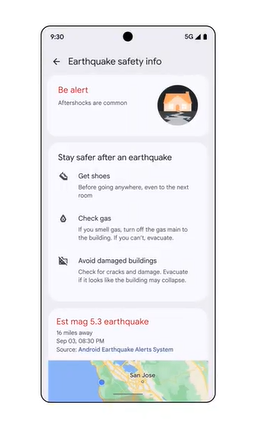
After many months of developer previews and beta releases, Android 15 is now officially available.
It will start rolling out to supported Pixel devices in the next few weeks, and in the next few months, devices from Samsung, Honor, iQOO, Lenovo, Motorola, Nothing, OnePlus, Oppo, realme, Sharp, Sony, Tecno, vivo and Xiaomi will get it.
It offers several updates that users will be able to take advantage of, such as the fact that the TalkBack screen reader is now powered by Gemini, Chrome can now read web pages aloud, and the Earthquake Alerts System — which uses crowdsourced earthquake detection technology to notify of earthquakes before they start — is rolling out to all U.S. states and six territories.
As with every Android update, there are many changes developers will need to be aware of. This time, the main updates for developers can be divided into four categories: typography and internationalization, camera and media experiences, user experience, and privacy and security.
“Android 15 continues our mission of building a private and secure platform that helps improve your productivity while giving you new capabilities to produce beautiful apps, superior media and camera experiences, and an intuitive user experience, particularly on tablets and foldables,” Matthew McCullough, VP of product for Android Developer, wrote in a blog post.
Typography and internationalization
FontFamily instances can now be created from variable fonts without having to specify the wght and ital axes, and the text renderer will automatically adjust those values to match the displaying text.
NotoSansCJK, which is the font file for Chinese, Japanese, and Korean, is also now a variable font, which the Android team says creates new opportunities for creative typography.
The Japanese Hiragana, or Hentaigana, font is now bundled by default, beneficial for artwork and design, but also in sharing and preserving ancient Japanese documents.
And finally, there is improved justification for languages which use white space to segment characters, like Chinese and Japanese.
Camera and media
For screens that support both HDR and SDR, setDesiredHdrHeadroom can be used to set the HDR headroom, which can prevent SDR content from displaying as washed out.
Android 15 also supports intelligent adjustment of audio volume and dynamic range compression for apps with AAC audio content and loudness metadata. This allows volume to be adjusted based on user devices and surroundings, the Android team explained.
Other updates in this area include Low Light Boost to adjust the exposure of the Preview stream in low-light conditions, greater control of flash intensity in SINGLE and TORCH modes, and support for virtual MIDI 2.0 devices as if they were a USB MIDI 2.0 device.
User experience
To improve multitasking, users can now save their split-screen app combinations and also pin the taskbar.
Additionally, apps that target SDK 35 will display edge-to-edge by default. System bars will be transparent or translucent, and content is drawn behind.
Privacy and security
Users can now create a private space where they can hide certain apps, requiring authentication to access them.
Android 15 also adds support for using passkeys to sign-on and supports autofilling saved credentials into relevant input fields.
Also, apps can now detect if they are being recorded, which allows apps to notify the user if this is happening while they are performing a sensitive task.
Additionally, the new allowCrossUidActivitySwiftFromBelow attribute prevents task hijacking attacks by blocking apps from launching activities if they don’t match the top UID on the stack.
And finally, PendingIntent creators now block background activity launches by default, which prevents apps from accidentally creating ones that could be used by malicious actors
Other developer experience updates across Android Studio, Jetpack Compose, and Android Jetpack libraries
The ApplicationStartInfo API provides insight into the reason an app is starting, time spent in launch phases, start temperature, and more.
The profiling class in Android Jetpack lets apps request heap profiles, heap dumps, stack samples, or system traces.
StorageStats.getAppBytesByDataType([type]) API gives insights into how an app is using storage.
Other developer experience updates include new PdfRenderer API capabilities, new OpenJDK APIs, new SQLite APIs, and new Canvas drawing capabilities.






